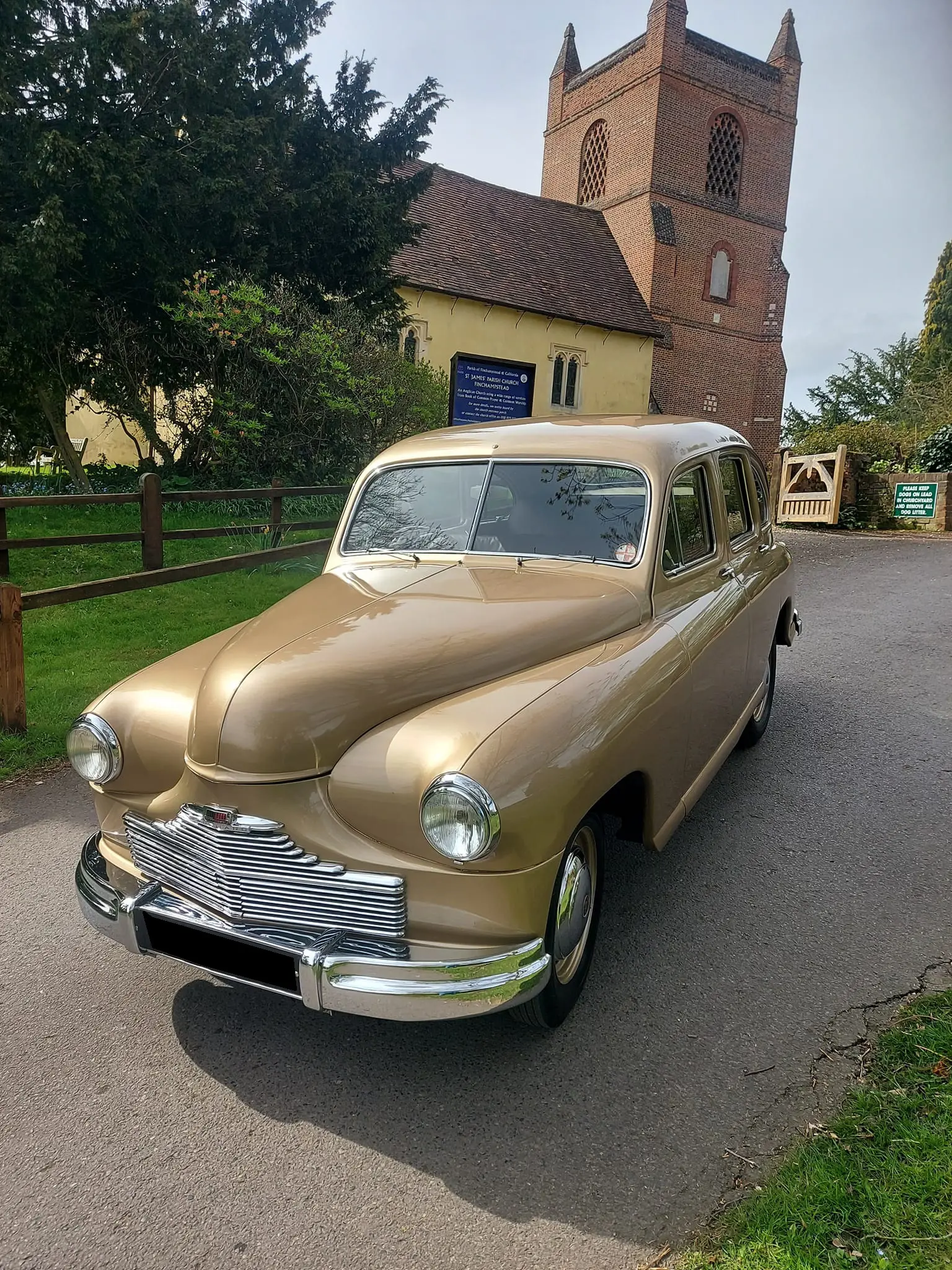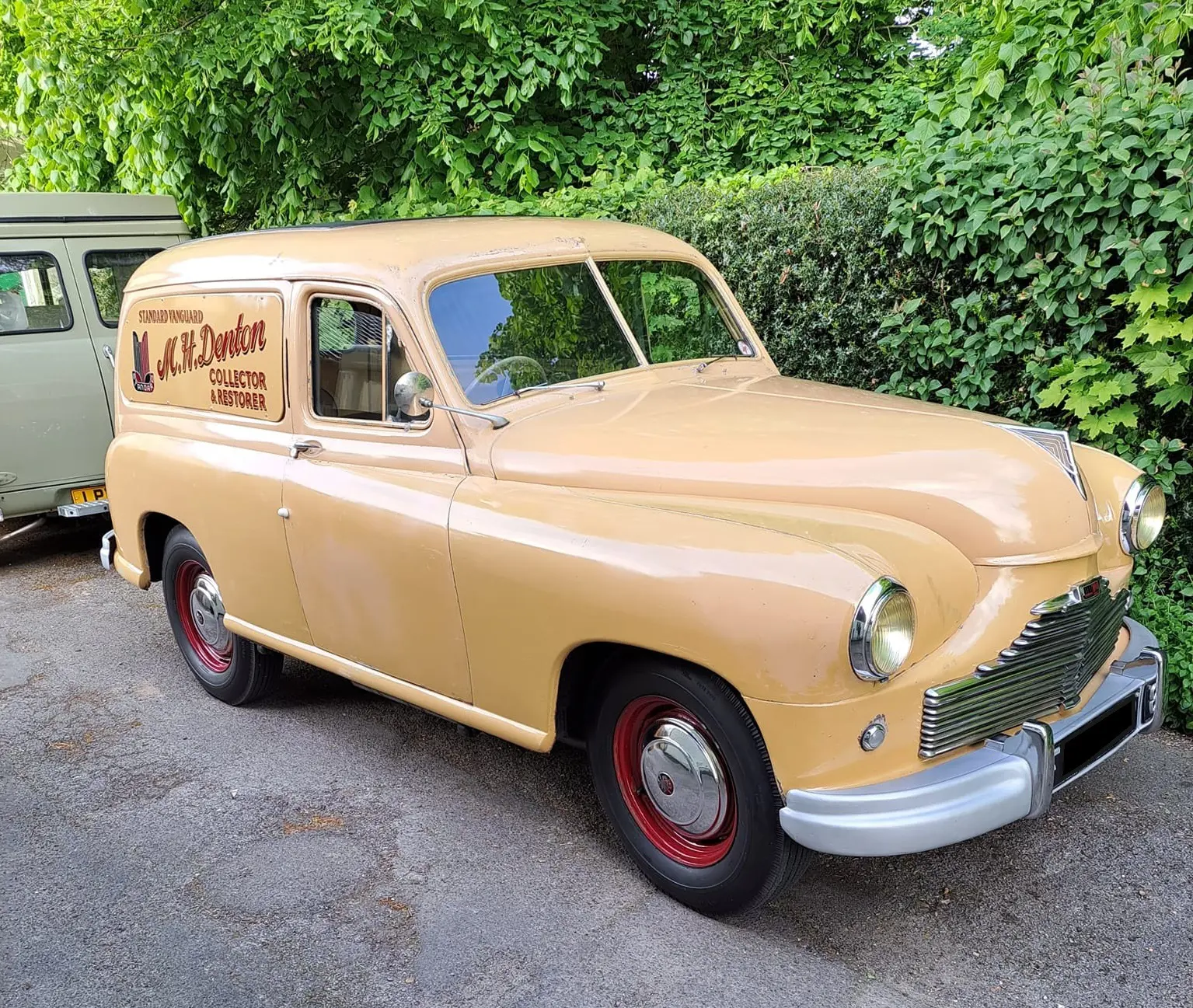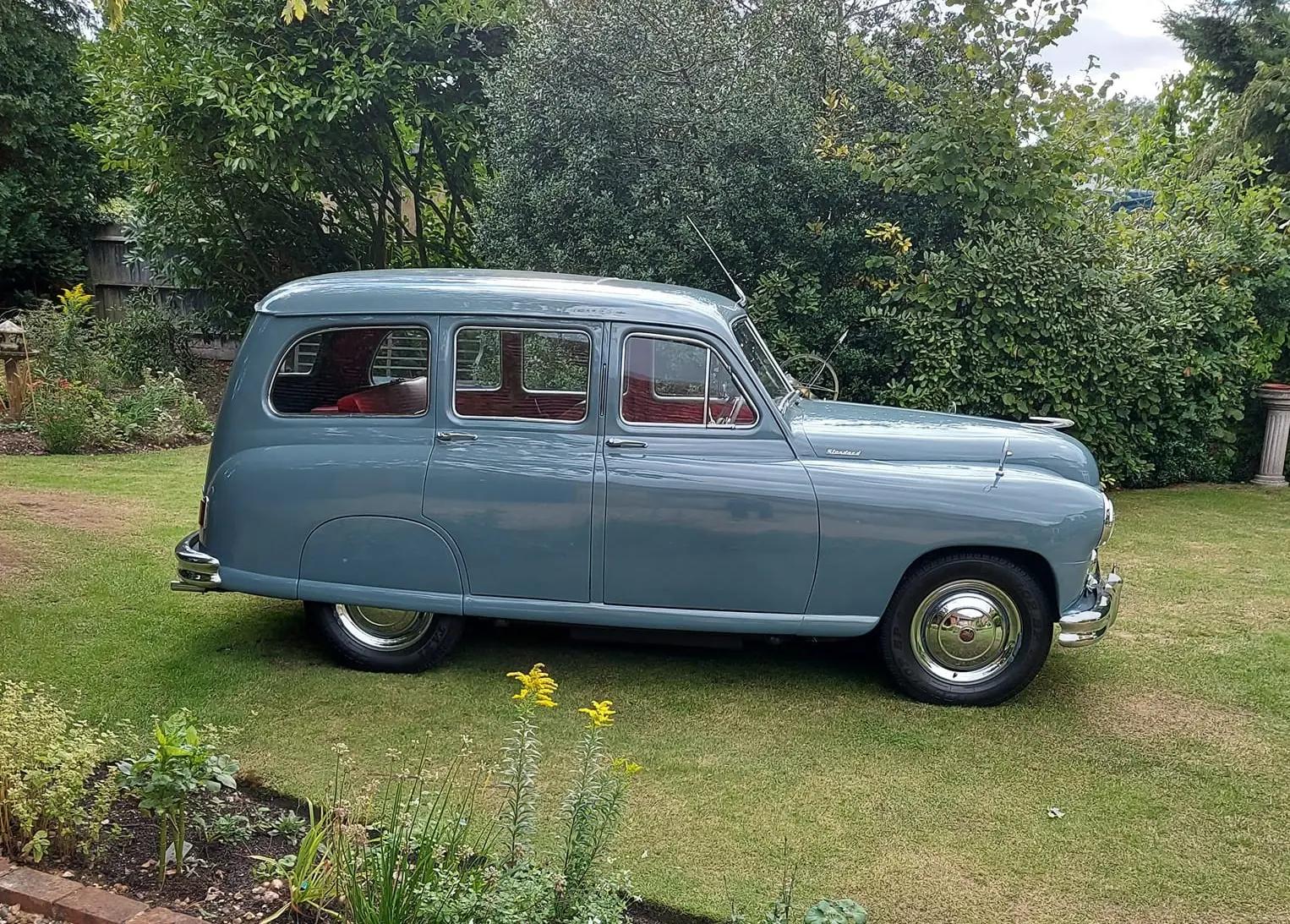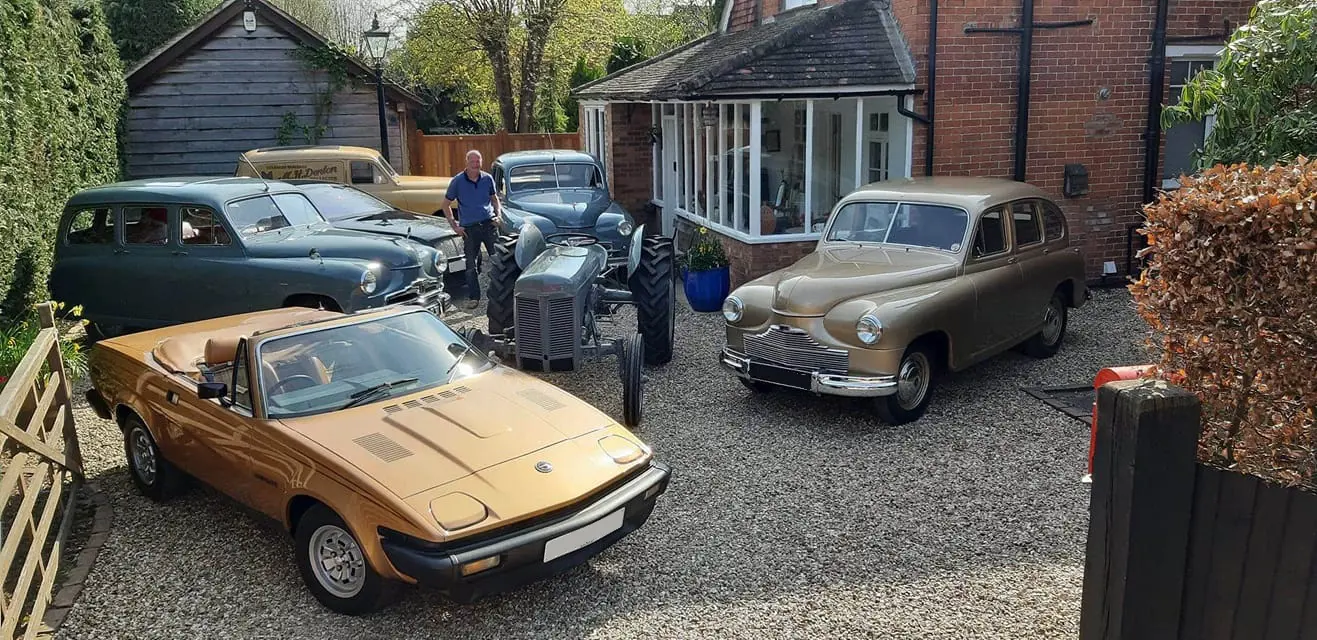MEET THE OWNER – THE MARK DENTON COLLECTION
12 June 2023
“My father always had Triumphs and drove a Vanguard pick-up when serving in the RAF. I took a shine to my Vanguard van in the village when I was 13 years old”. And today, Mark Denton’s fleet includes a TR7 Convertible and no fewer than six Vanguards – one of the UK’s most important post-war cars.
Plans for the Vanguard commenced in 1945 when Standard faced the vast challenges of returning the Canley factory to peace-time production and planning an entirely new car. Accordingly, the company’s MD, Sir John Black, dispatched his chief engineer Walter Belgrove to sit outside the American Embassy in Grosvenor Square for several days to study “the best-looking Yankee car, the Plymouth. Don’t get shot”.

The Vanguard debuted in 1947 – “A British car designed for world conditions. It is outstanding in roominess, in comfort, in performance and appearance. In workmanship and finish, in economy and reliability, it is a typically British product”. Mark acquired his 1950 Champagne Metallic Phase 1 in 1990 and refurbished virtually every aspect short of a total chassis-off rebuild. Twelve years later, the Denton Vanguard took part in the 2002 Golden Jubilee parade.
By 1949 Standard unveiled the Vanguard estate, 12cwt van and pick-up. The sales publicity claimed the second-named was: ‘A worthy salesman for your business’. A local butcher in Finchampstead initially acquired Mark’s 1950 version. His pick-up dates from the same year and is a scarce surviving model of thousands of Vanguards commissioned by the RAF during the 1950s.

In 1951 Standard facelifted the Vanguard as the Phase 1A with a new grille, and Mark’s collection includes a saloon and an estate. The former is one of the last to leave Canley, and it was registered in March 1953. Mark came across it in 1985, and the grey Vanguard is the original member of his collection. As for the estate, Standard was the only major British car manufacturer at that time to offer a factory-built station wagon; the Ford Zephyr-Six and Vauxhall Velox E Estates had coach-built bodywork.
The youngest member of the Denton Standard fleet is the 1954 Phase 2, which Standard introduced in late 1953. “Re-styled for tomorrow’s needs”, boasted one advertisement of the new ‘notchback’ bodywork with its wider doors. But just ten years later, the famous marque was no more as the company now focused on Triumphs, the brand they bought in 1945.

In fact the introduction of the TR2 70 years ago was instrumental in the gradual demise of the Standard name, and when the last Vanguard Luxury Six departed Canley in 1963, its heir was the Triumph badged 2000. By the time Mark’s TR7 convertible, the youngest member of his collection, reached the showroom, the Standard name already belonged to another world of smog, Brylcreem and National Service.

As Mark notes, “Most youngsters only seem to know the Morris Minor and the Volkswagen Beetle as popular post-war cars. It seems Vanguards are forgotten”. Yet in 1947 the Phase 1 was arguably the first British vehicle designed for world markets, as well as providing dependable transport on the home market. As I wrote in Classic & Sports Car ten years ago:

A Phase 1A would have been the ideal car for Jack Hawkins to drive along the A27, duffle coat worn as a defence against the cold and the not-very-good heater, wipers battling the November mist, the optional Laycock de Normanville overdrive enabling the Vanguard to rumble past Hillman Minxes as he sped toward Portsmouth RN base.
Plus, Mark’s fleet also includes a Ferguson tractor – but that is another story! For now, here is a reminder why his Standards are a vital aspect of British motoring history –
With Thanks To: Mark Denton
